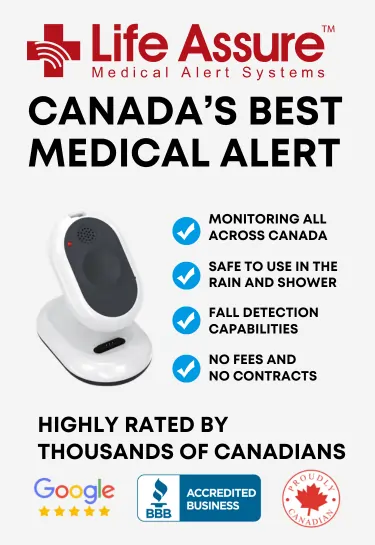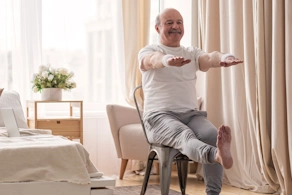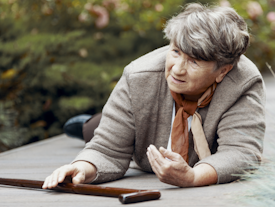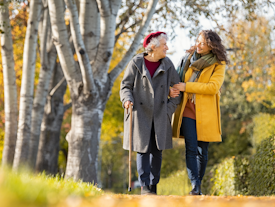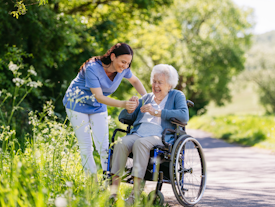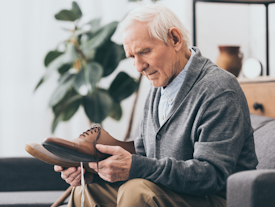How Fall Detection Devices for Seniors Can Save Lives in Emergencies
As you age, your body becomes more susceptible to falls, causing medical emergencies. A fall can cause serious injury, like a broken bone or head injury. For elderly adults over 65, falls are the leading cause of injury-related death in Canada.
As bones become brittle with age, the consequences of falling grow even more serious. A fall detection device helps in such cases by sensing falls and alerting for help fast. Quick alerts can save elderly lives during emergencies at home or outside.
This article shows how these devices protect Canadian seniors in urgent moments. You gain safe independence across Canada with these fall detection devices for seniors.
Life Assure Product Quiz
Find The Perfect Medical Alert Device
Take our 30 second quiz and discover
which Life Assure medical alert device
is the right fit for you or a loved one.
Life Assure Product Quiz
Find The Perfect Medical Alert Device
Take our 30 second quiz and discover
which Life Assure medical alert device
is the right fit for you or a loved one.
How Fall Detection Devices Help Protect Seniors Against Medical Emergencies?
Here’s how fall detection devices safeguard older adults against falls and medical emergencies.
Automatic Fall Sensing with 24/7 Monitoring
Smart sensors equipped in fall detection systems read motion, speed, and sudden halts in small, careful ways. They learn your normal steps, then flag sharp drops or long, odd stillness.
If the aged adult falls, the device sends an alert within a few seconds. A trained agent reaches you quickly and keeps the line steady. Those early minutes often shape what happens next.
The device keeps guard day and night, without nagging or extra fuss. You move as you wish, yet support stays one button away. That simple safety net helps the elderly keep confidence even on tough days.
GPS Location to Direct Canadian EMS Quickly
Accurate location guides Canadian paramedics to the right door on the first try. GPS locks outdoors, while Wi-Fi hints help in big indoor spaces. That mix is useful in condos, malls, and long-term senior residences.
The dispatch team sees your spot and clears the best route for crews. They avoid closed entrances and reach you with fewer delays.
Canada’s roads vary between dense city grids and long rural stretches. So, these fall detection system handles turns, ramps, and multi-building addresses found in larger complexes. This detail may seem small, but it saves minutes when seconds matter most.
Aged adults need to wait less, feel calmer, and get care more quickly, anytime, anywhere.
Two-Way Voice and SOS for Immediate Help
With two-way voice in fall detection devices, older adults can speak hands-free, even when pain makes movement hard. One press starts the call, or the device itself dials after a fall.
You can say what hurts, list down your medicines, and share your allergies clearly on the SOS call. If speaking feels tough, you can stay quiet, and help will come. This option lowers panic and keeps your breathing steadier.
Agents support English and French, which helps across Canada’s diverse regions. They contact family or neighbors and coordinate with local EMS dispatchers.
A lockbox code can also be shared to avoid forced door entry. You can thus prevent broken frames, confused guards, and hallway delays in tall towers. The whole process feels human, simple, and reassuring.
Redundant LTE/Wi-Fi Connectivity for Reliable Alerts Nationwide
Strong connectivity needs more than one path, especially across Canadian provinces and terrain. LTE reaches wide areas, while Wi-Fi works well inside your home.
If one link fails, the other keeps the alert flowing cleanly. The fall detection devices test connections often and switch to the strongest signal. So, seniors get a steady lifeline even during storms, festivals, and power glitches.
Harsh weather can strain networks from Vancouver Island to St. John’s. Thus, the redundant links help calls push through crowded or weakened channels faster.
Battery backups keep base units working through short local outages. Portable models travel with you on buses, ferries, and clinic visits. Hence, Canadian seniors stay connected in real life in any emergency situations.
How to Choose the Best Fall Detection Devices for Canadian Seniors?
Choosing the right fall detection device for the elderly starts with real-life tests and clear support. The following are key factors to consider before buying one.
Consider response time and monitoring
Response time is the heartbeat of any emergency system. Cross-check how fast detection happens and how quickly a human speaks. Request average response numbers, not only the best results from ideal tests.
Agent availability should cover nights, weekends, holidays, and storm days. Seniors seek calm voices that guide them without rushing or confusion.
Run a real test before choosing, not just a quick showroom demo. Press SOS, time each step, and note any awkward pauses carefully.
Verify network coverage Canada-wide
Coverage maps look nice; however, real streets tell the true story. Try the device at home, in elevators, and near parking ramps. Walk to the pharmacy, library, and community center, then do the test.
Check call strength in underground garages and older brick buildings. If calls stay clear, you can trust weekend trips and errands.
Canada has rural pockets, cottage lanes, and valleys that block signals. Devices having multi-band radios and roaming features will be able to handle those tough areas better.
Prioritize comfort, design, and cold-weather durability
Fall detection devices for seniors only help if you wear them every single day. Choose a light pendant or watch that sits flat under coats.
Big buttons help stiff fingers, and clear screens help aging eyes. Besides, cold snaps in Canada can drain batteries and make plastic parts brittle fast. So, look for devices rated to at least minus twenty Celsius reliably.
Also, drop ratings of the device should cover tile, ice, and concrete entry steps. Tough builds survive the small slips you might not report.
Battery life should last days, not hours, with honest, real usage numbers. You should hear a chime or see a light while charging it.
Compare total costs and customer support
The price of a fall detection device is always more than the number printed on the box. Add the device, activation, monthly monitoring, and caregiver app fees. Ask about returns, trial periods, and any early cancellation rules.
Also, look for senior discounts, veteran pricing, or annual prepay savings. Choose the plan that protects you daily.
Think about long-term support, repairs, and easy access to spare parts. A friendly help line matters when something small feels confusing, especially for the elderly.
Conclusion
Aged adults deserve steady help when emergencies strike during everyday Canadian routines. With fall detection devices, you get fast alerts and calm, human support.
It helps maintain your freedom, because help arrives quickly whether you’re at home, on the sidewalk, or in a store. However, ensure to choose a device that fits, handles cold, lasts long, and stays simple.



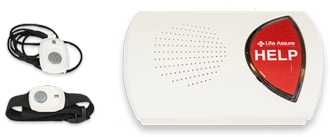


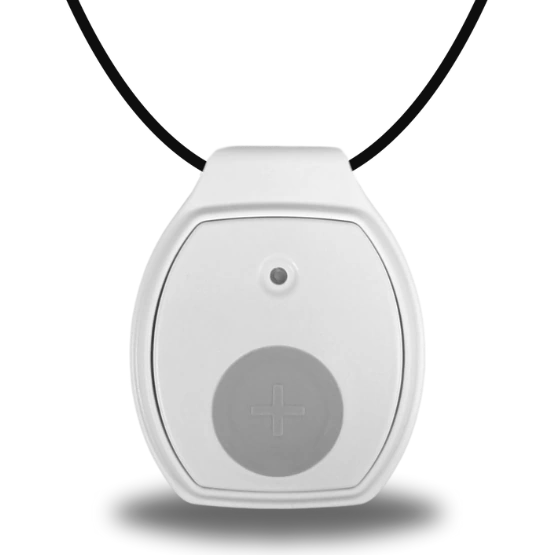


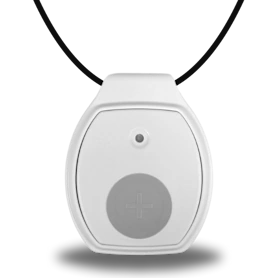

 Get Help With The Push Of
A Button
Get Help With The Push Of
A Button
